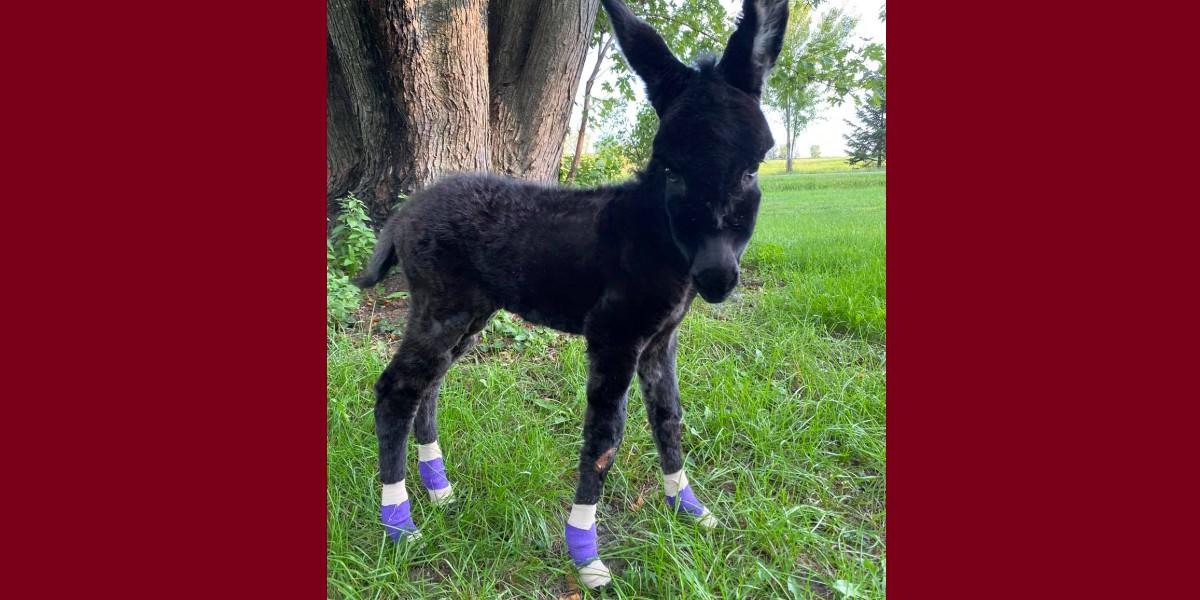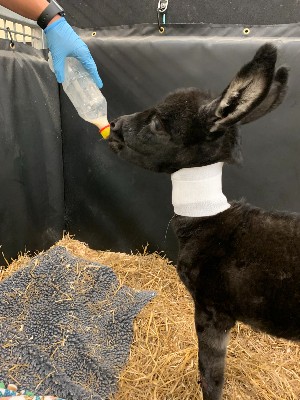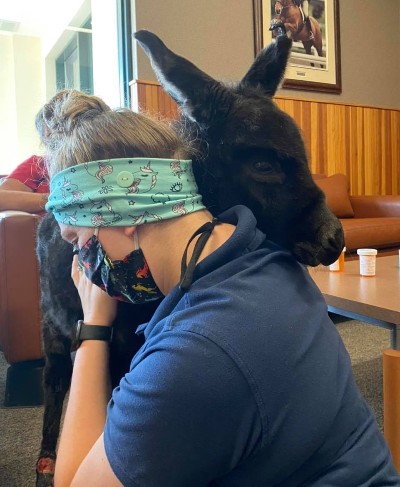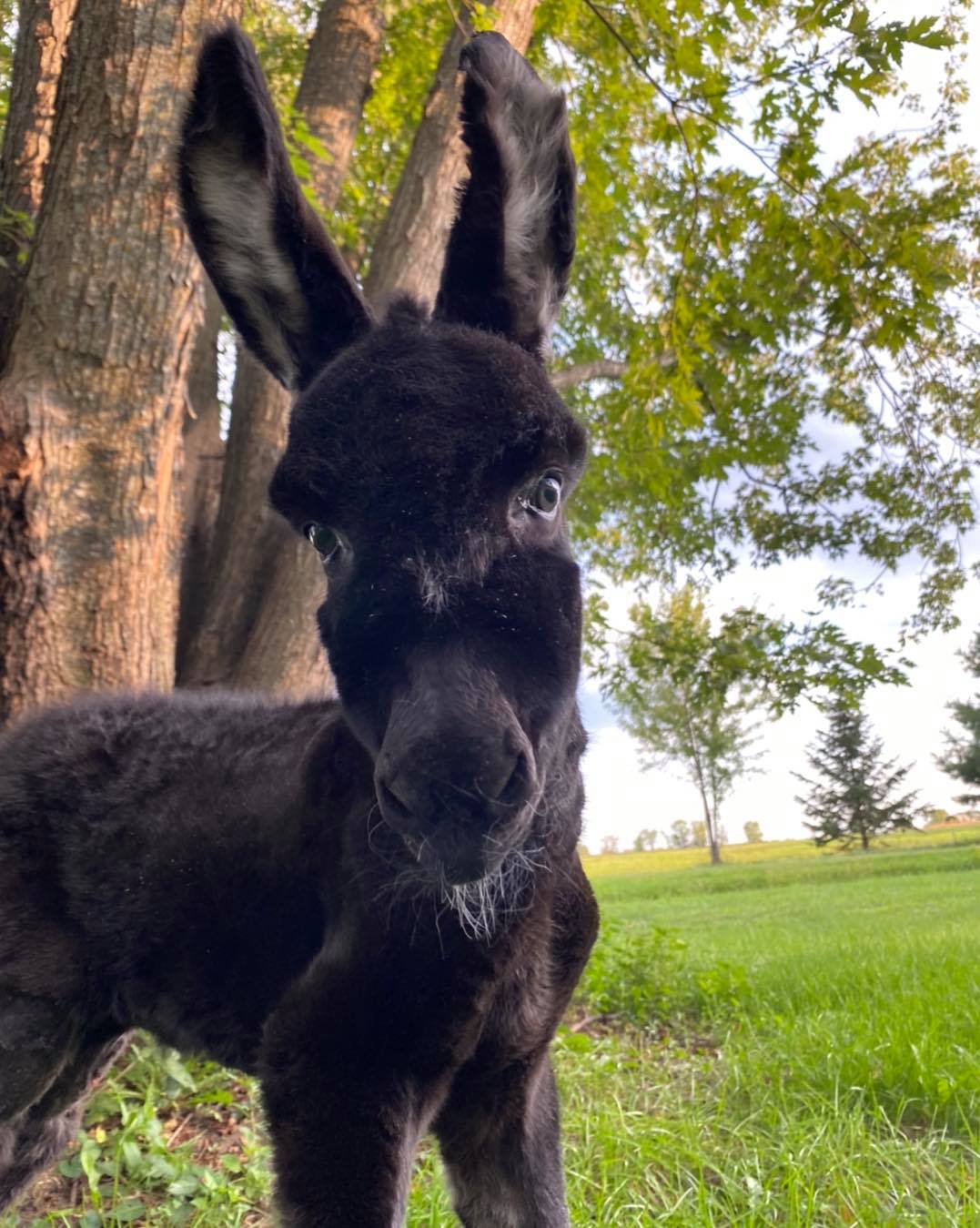Ace up the sleeve
Life doesn’t start off easy for newborn donkey Blackjack, but expert care puts him back on track

Life doesn’t start off easy for newborn donkey Blackjack, but expert care puts him back on track
Blackjack shows off his bandages after a trip to Piper Equine Hospital. Photo courtesy of Save the Brays.
Kym Garvey only can guess what led up to her discovery of an injured newborn donkey foal one morning back in August. Her organization, Save the Brays Donkey Rescue, had recently purchased a group of 16 donkeys from a feedlot.
Among them was a pregnant mare, who likely delivered her foal near the fenceline of her paddock. The presence of neighboring mules on the other side of the fence may have spooked her into pushing her baby to move before the foal was ready.
“I think she was anxious to get the baby standing and away from this perceived danger,” Garvey says. “It looked like she had been pawing at him and had dragged him quite a ways.”
Garvey removed the newborn from the enclosure and set off for Piper Equine Hospital at the University of Minnesota College of Veterinary Medicine. The dark-coated foal, named Blackjack, had visible injuries and bruising that would need treatment, including swelling around his umbilicus—the site where his umbilical cord was attached to his body.

Further examination by Dr. Alex Bianco and other clinicians at Piper revealed the extent of his medical needs.
“The swelling on his umbilicus was determined to be a hematoma based on an ultrasound,” Bianco says. “His bloodwork supported signs of infection, dehydration, and muscle damage.”
As a newborn who hadn’t yet nursed, Blackjack was at a higher risk of developing a severe infection called sepsis. His care teams began treatment right away, which included plasma transfusion, IV fluids, IV antibiotics, hourly bottle feeding, wound care, pain control, and helping Blackjack stand. The young donkey’s tenacity also helped aid in his recovery.
“Luckily, he had a good suckle reflex,” Bianco says. “He readily took to nursing from a bottle, which enabled us to maintain his blood sugar, and he did not require a feeding tube.”
Despite his rough start in life, little Blackjack, or BJ as he is known to Piper staff and fans of the Save the Brays Facebook page, has recovered well. He even made a new friend during his healing process. A gelding named Peanut took a shine to the little foal and served as his guardian when the two were turned out with other donkeys. It earned him the title, “Papa Peanut,” Garvey says.

Papa Peanut accompanied Blackjack on his first ride in a horse trailer. Their destination was back to Piper Equine Hospital this past fall for a health checkup, where BJ was given the all-clear by clinical staff. Garvey says she is grateful to the University for treating the foal with the best care.
“We used the U quite a few times now with babies and a couple of other adults, too,” she says. “They’re always our go-to whenever we have something that we know is pretty serious. The staff there is wonderful. We love everybody there.”
Throughout his recovery, Garvey has watched the once weak foal’s personality bloom.
“He is doing super good,” Garvey says. “He's really feisty, he runs around and is a little, sassy fella. He’s doing the ear pinning and bucking—you know, all the tough little stuff.”
Blackjack will remain with Save the Brays near Milaca, Minn., until he is ready to be adopted. He is one of more than 50 donkeys and mules living at the rescue, which works to rescue, rehabilitate, and find forever homes for these equines.
